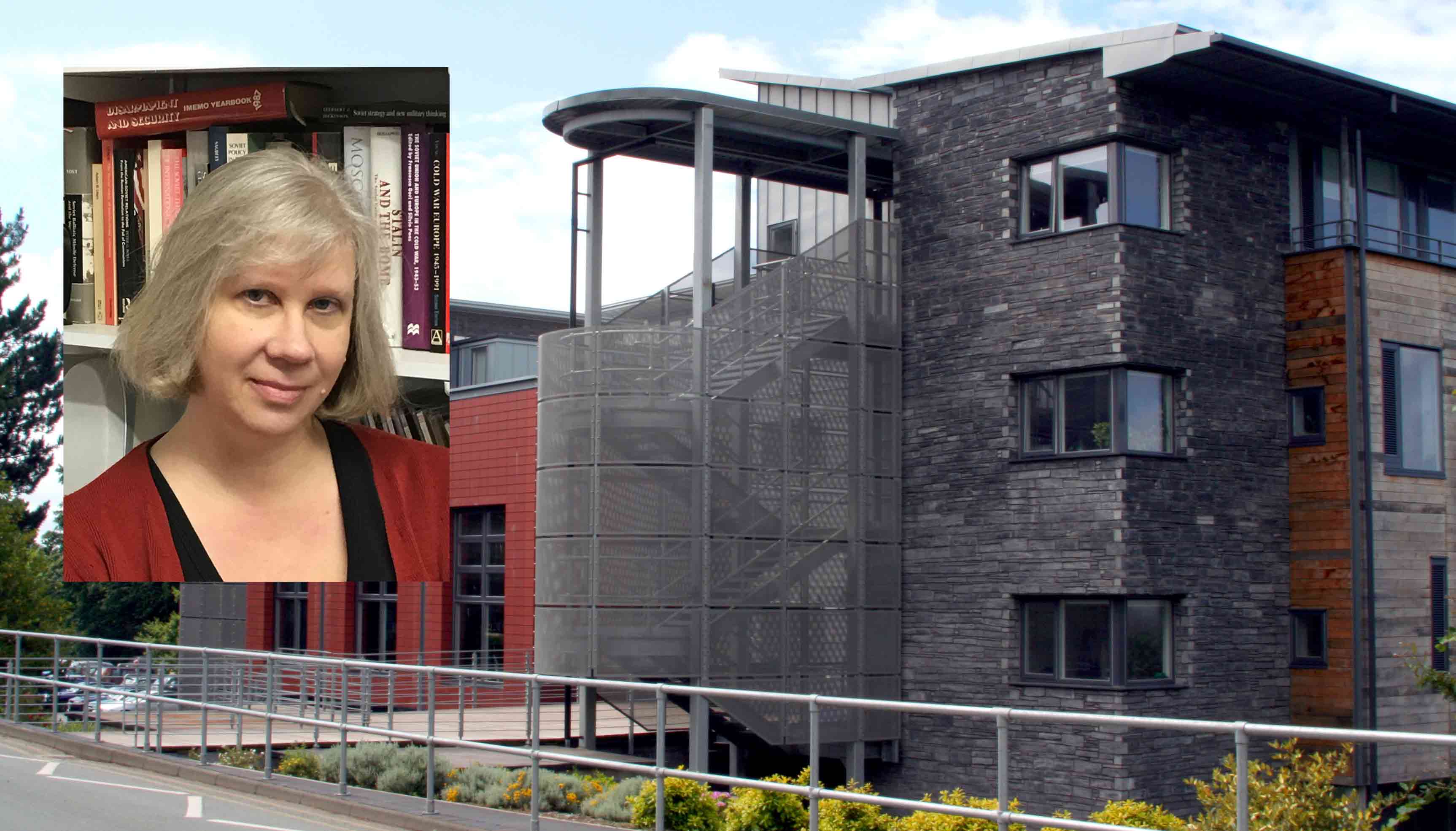Mewn erthygl yn The Conversation mae Dr Jenny Mathers o’r Adran Gwleidyddiaeth Ryngwladol a Dr Allyson Edwards o Brifysgol Caerfaddon yn trafod sut mae plant Rwsia yn ganolog i gadw cof y rhyfel yn fyw gyda rhuban Rhuban Sant Siôr.
On May 9, Russia celebrates Victory Day, commemorating the Soviet Union’s victory over Nazi Germany in 1945.
Few people who watch international news coverage of Victory Day parades and events realise that Russia’s children are central to keeping the memory of the war alive, and that an important vehicle for children’s contribution to this process is the St George ribbon – a small piece of orange and black striped fabric that millions of Russians wear on Victory Day.
History occupies an exaggerated place in Putin’s Russia. As US broadcaster Tucker Carlson’s interview with the Russian president demonstrates, Putin manipulates certain moments in history to justify both his claims that Russia is a great power and his foreign policy actions.
The second world war – or Great Patriotic War as it is known in Russia – is perhaps the most important of these historical moments, and Putin presents the Soviet Union’s existential struggle against Nazi Germany, unjustifiably, as the equivalent of Russia’s war in Ukraine.
While the Soviet Union contributed significantly to the Allied victory in 1945, the Russian state’s version of the war presents Soviet actions as unquestionably glorious and heroic. Dark and difficult episodes are misrepresented, such as the secret protocol of the 1939 Molotov-Rippentrop Pact dividing eastern Europe into Nazi and Soviet spheres of influence, and the 1940 massacre of 22,000 Poles by Soviet forces in the Katyn Forest.
Attempts to challenge the Russian state’s official narratives of the Great Patriotic War are presented by Putin as threats to national security, and even to the continued existence of Russia itself.
Despite passing legislation to protect its version of history and even enshrining it in Russia’s constitution, Russian officials continue to warn that hostile forces are attempting to undermine the country’s international standing by erasing Russia’s history.
But the Kremlin has a secret weapon in this fight for the past: Russia’s children.
Using the young
Young people are regarded by Russia’s leadership both as a crucial audience for its messages about the Great Patriotic War and as a vital line of defence to protect that “truth”. Children are expected, therefore, to engage in key commemorative acts that keep those memories alive for future generations.
Our ongoing research into youth militarisation in Putin’s Russia indicates that children are being offered a special mission: to ensure their country’s future by saving its past. Russia’s patriotic youth groups create opportunities and provide support for young people to engage in activities that preserve and protect state-approved historical narratives.
One group, known as the Volunteers of Victory, was established by the Russian state in 2015 with the mission of preserving the memories of Russia’s past victories. There are currently 650,000 members of the Volunteers of Victory in 89 regional branches across Russia.
Members are predominantly teenagers, and undertake a variety of activities, from meeting war veterans and recording their personal stories, to cleaning war memorials and tidying war cemeteries. They also organise games and other events to help their members and other young people learn about the heroic actions of Soviet and Russian soldiers in wars, both past and present.
Unlike some other Russian patriotic youth groups, the Volunteers of Victory do not dress in military-style uniforms or behave like soldiers-in-training. Instead, they present a far more approachable and friendly appearance, in pale blue sweatshirts with the group’s logo: a white dove and the St George ribbon.
Originally a military decoration in 18th century Imperial Russia, the St George ribbon was revived during the Soviet period as a symbol of respect for the achievements of the Great Patriotic War.
In Putin’s Russia, it has become synonymous with Russia’s annexation of Crimea in 2014 and with its war in Ukraine. The ribbon’s close association not only with victory, but also the heroic sacrifices of the ancestors of today’s citizens means that many Russians feel an emotional attachment to it.
Outside Russia, however, the St George ribbon is widely considered a symbol of Soviet oppression and of continued Russian imperialism. Several countries in eastern Europe have made it illegal to wear the ribbon in public spaces – a move that Moscow officials regard as an attempt to deny historical truth and “cancel” Russia.
To protect the ribbon and the history it represents, the Russian state has designated the Volunteers of Victory as the official organiser of the St George ribbon action: an annual effort to distribute ribbons to members of the public.
In the weeks leading up to May 9, Victory Volunteers go to public places throughout Russia, as well as to schools and universities. They hand out the St George ribbon and explain its significance, while demonstrating the most respectful way to wear it: pinned to clothing on the left side of the body, above the heart.
The St George ribbon action demonstrates that Russia’s children are not simply passive recipients of pro-war propaganda, but actively participate in spreading the Kremlin’s message. Through activities like these, defending the official version of history becomes part of the everyday experience of many children, making it harder to ignore, resist or reject.
Even more importantly, by appealing to young people to be the saviours of the country by perpetuating a version of historical memory that glorifies war and the military, Putin and his supporters are preparing the next generation of Russian citizens to regard war as a normal and necessary condition of Russia’s existence.![]()
Mae'r erthygl hon wedi ei hailgyhoeddi o The Conversation dan drwydded Creative Commons. Darllenwch yr erthygl wreiddiol.

